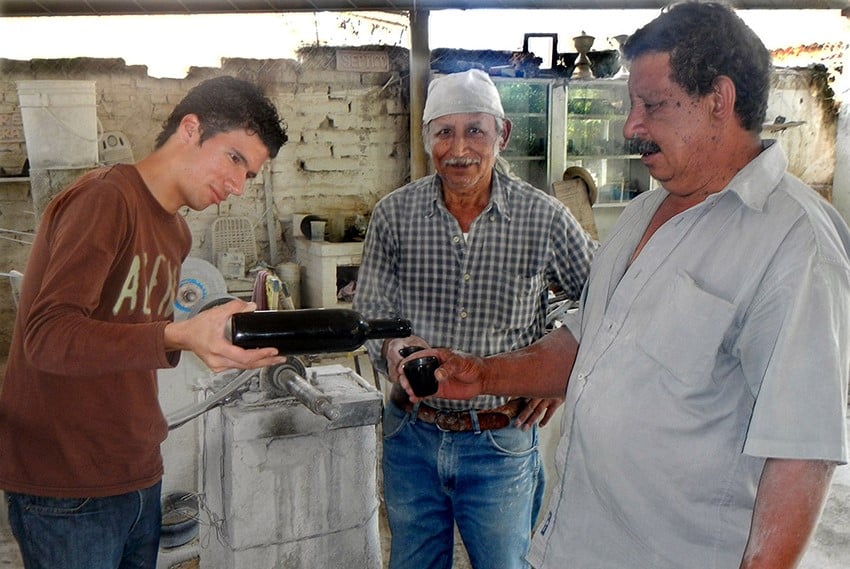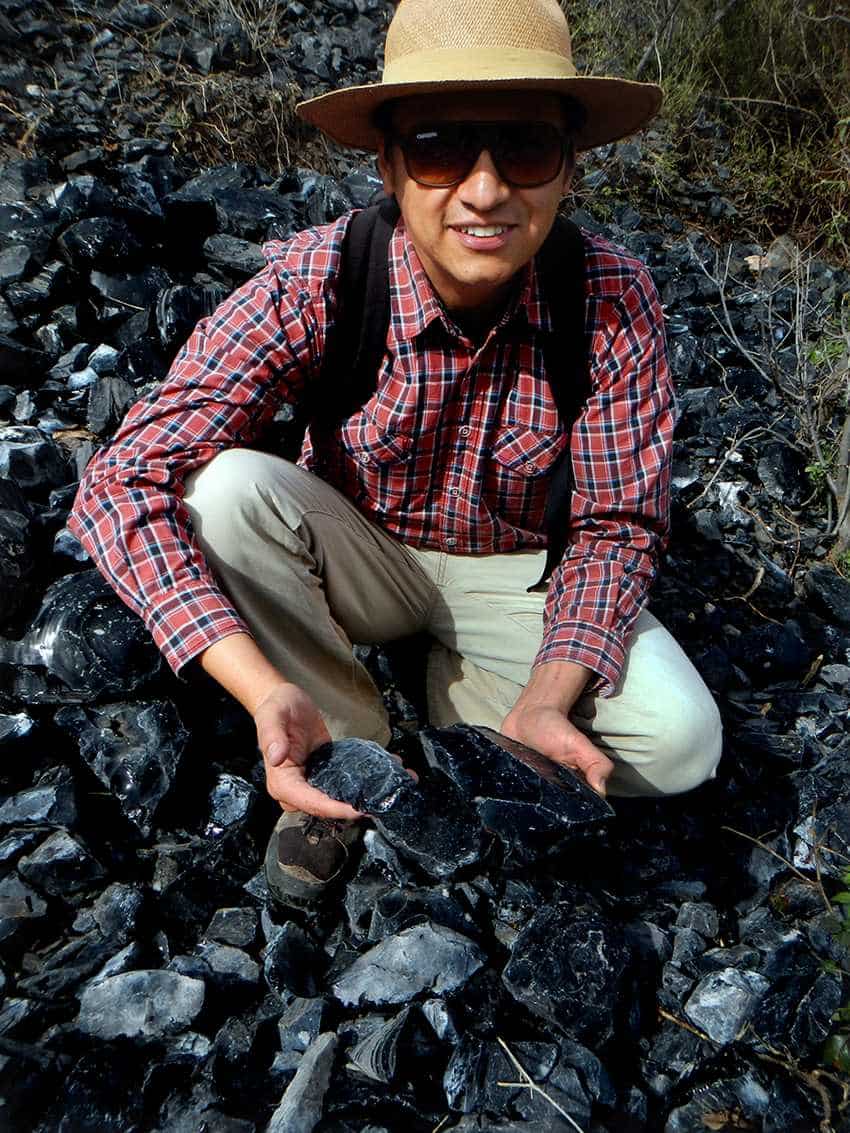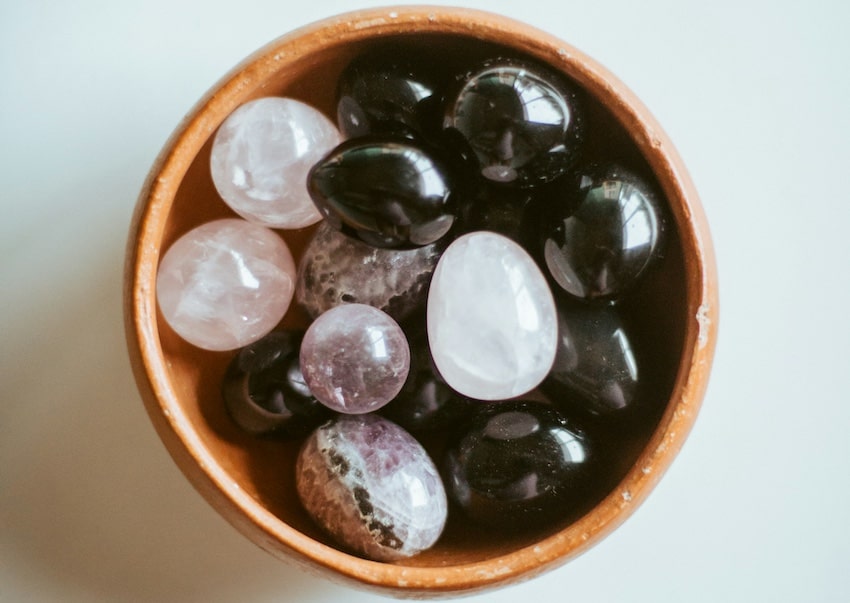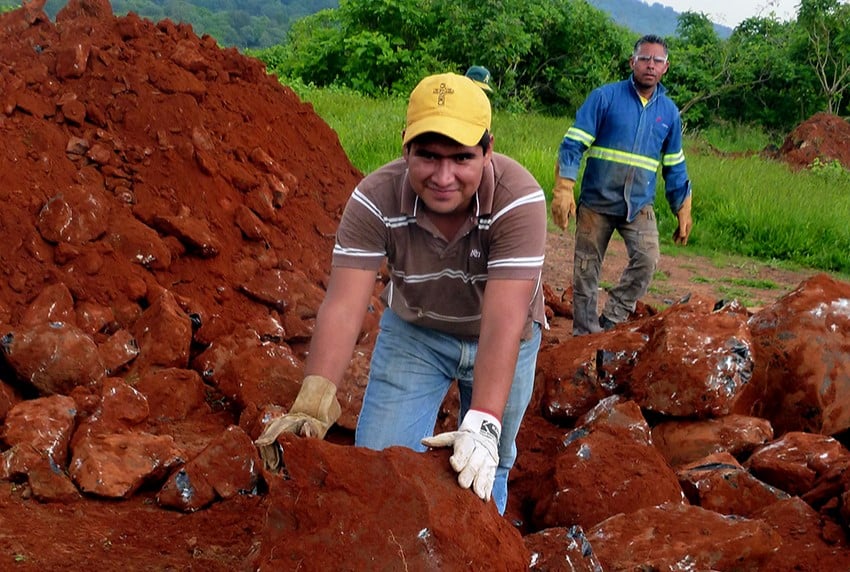Obsidian in Jalisco: a 10,000-year-old story

Archaeologist Rodrigo Esparza has been studying obsidian for twenty years. In a recent online conference sponsored by the University of Guadalajara, he summed up his observations about this volcanic glass which played a vital role in the history of Mexico.
The biggest deposits of obsidian on this planet, he said, are found in the U.S. in the great plateau of Oregon. The next largest are in South Africa and then in Russia’s Kamchatka Peninsula, with the Mexican state of Jalisco taking fourth place on the world stage.
Jalisco: Mexico’s obsidian heartland
“Jalisco has 54 deposits, but more are being found all the time” says the professor. A case in point is the Sierra de Ahuisculco Wildlife Reserve (Selva Negra) whose obsidian fields are presently being studied for the first time: “More than 300 hectares of high-grade black and red obsidian have been mapped so far—dotted with hundreds of old mines and workshops—and the outer limits of the deposit have not yet been reached.”
“Thanks to the discovery of two Clovis points [traditional speartips] in Jalisco,” Esparza went on, “we know for sure that obsidian was being worked in this part of Mexico ten thousand years ago. The Clovis points date back to Pleistocene times and were found at San Marcos Lake, just west of Lake Chapala.”
The sharpest blades in the world
When it comes to producing a sharp edge, nothing beats obsidian. It is, after all, natural glass, and like all glass it has no crystalline structure. This means there is no limit to how far you can sharpen an obsidian knife. So, obsidian spearheads, blades, and scrapers have a keener edge than their metal counterparts. The Spaniards learned this the first time they encountered the macuahuitl, the meter-long native Mexican sword which was flat and made of wood, with incredibly sharp obsidian blades set into grooves along the edges and glued in place with natural asphalt (bitumen).

The macuahuitl was so deadly that with one blow a warrior could cut off a man’s leg or decapitate a horse, as Spanish conquistador Bernal Diaz Del Castillo, witnessed:
“Pedro de Morón was a very good horseman, and as he charged with three other horsemen into the ranks of the enemy the Indians seized hold of his lance and he was not able to drag it away, and others gave him cuts with their broadswords, and wounded him badly, and then they slashed at the mare, and cut her head off at the neck so that it hung by the skin, and she fell dead.”
Ancient artisans and the art of working obsidian
An obsidian knife could be made by knapping or chipping away at a chunk of obsidian, just as was done with flint over ages, but eventually, artisans discovered a much more efficient procedure: percussion. At the site of an obsidian mine, they would extract a piece of the material weighing perhaps eight kilos and give it a conical shape with a flat bottom. This is what archaeologists call a core.
The most promising cores would then be carried off to an artisan sitting beneath a tree. He would place the piece, tip downward, between his legs and with a deer horn, apply pressure to the right spot on the flat surface, popping off a long, thin blade. This technique resulted in elegant prismatic blades that had two naturally sharp edges.
The many colors of obsidian
Although most of the world’s obsidian is black, it also comes in colors. In Jalisco alone, Rodrigo Esparza has come upon more than 25 colors, such as marbled red, blue, green and even white, as well as a mix of colors known as rainbow.

“Obsidian also comes in a variety of sheens, including silver and gold, which can only be appreciated when you move the piece in the sunlight.”
Mexican artisans have always appreciated the beauty of obsidian and have used it not only to sculpt statues but also to produce fine jewelry.
“In shaft tomb burials 2000 years old, we found amazingly thin pieces of obsidian, perhaps three centimeters in diameter, but less than two millimeters in thickness,” Esparza says. “Some were perfectly round discs and others had the shape of animals or humans. They looked very much like charms, each inevitably perforated by a tiny hole. At first, we thought the discs might be mirrors, but they were too small for that. It soon became clear that they were something like spangles that could be strung together to make a necklace, bracelet, or an elaborate pectoral. Perhaps these were sewn on clothing to give a sort of Elvis Presley effect. I’ve written a paper on the clever percussion technique they probably used to get such thin flakes. No modern artisan knows how to make obsidian so thin … and, much less, how to put a hole in it!”
Obsidian workshops today

Today’s artisans use modern techniques for working obsidian, but their creations are no less surprising and attractive than the ancient ones.
An example, Esparza says, is the taller (workshop) of Don Eleno Espinoza in the little town of Navajas, located 30 kilometers southwest of Guadalajara. Here they carry on an ancient tradition but employ modern devices like grinding wheels for polishing.
In one corner of the workshop, piled on the floor, visitors can find a collection of just about every type, color and sheen of obsidian, brought to Navajas from all over Jalisco.
That collection, however, is shrinking.
“The artisans of Navajas report two problems,” Rodrigo Esparza says “One is the spread of agave fields over what were once obsidian deposits. Aerial photos show that several historically important — and ‘protected’ — obsidian deposits have simply disappeared, covered with agaves.”

Mexican obsidian catches the eye of China
The second problem is on an international scale. Rainbow obsidian, for example, has come to the attention of Chinese entrepreneurs, who eventually find their way to remote backwaters where they will buy everything that the local people can produce … until there is none left. They are also on the lookout for deposits that have large blocks of obsidian. Although these weigh tons, they are transported to docks and eventually end up in China.
“Foreigners can spirit obsidian out of Mexico without paying tariffs of any kind,” says Esparza, “because the government officially lists obsidian as cascajo, gravel, and it sells for one peso a kilo. In ancient times it was a priceless resource but now it’s classified as worthless.”
John Pint has lived near Guadalajara, Jalisco, for more than 30 years and is the author of A Guide to West Mexico’s Guachimontones and Surrounding Area and co-author of Outdoors in Western Mexico. More of his writing can be found on his website.
Source: Mexico News Daily

